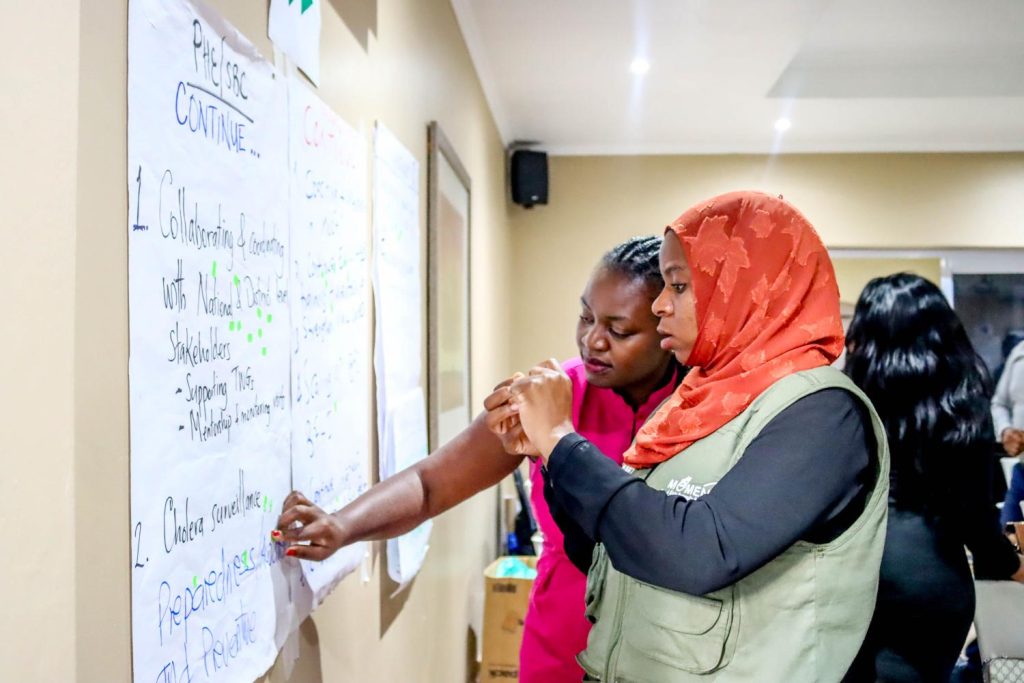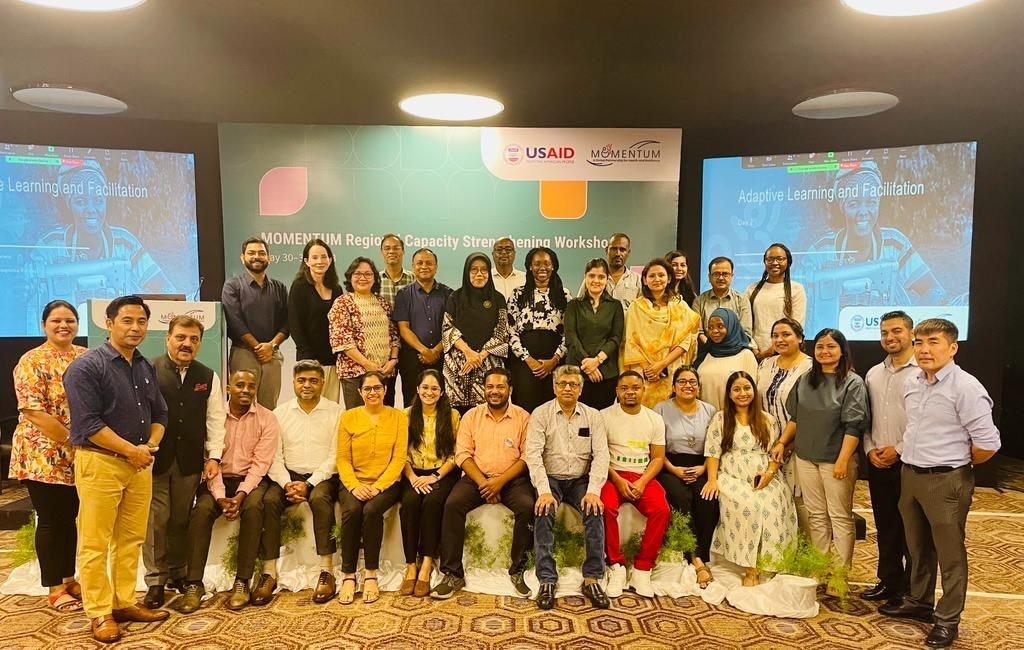Opening Eyes and Making Connections: Insights from a Knowledge Management Practitioner in Malawi
Published on September 22, 2023
This post was originally published on usaidlearninglab.org. You can find the original piece here.
by Zainab Chisenga, Knowledge Management and Communications Manager, MOMENTUM Tiyeni Project (Malawi)
How do we create useful knowledge? Where and how do we find resources that support our daily work? How can we really learn from our experiences? Often, knowledge management (KM) practitioners who work in global health and development face these deceptively simple questions. The way we address them can influence how the teams we work with understand, embrace, and proactively engage in all aspects of KM. Our roles are to be connectors and eye openers. In this blog, I share a few key insights that have emerged through the MOMENTUM Tiyeni project in Malawi. You may find these helpful as you work to improve your own KM practices.
Leverage Existing Knowledge Resources
We are creating information every day. Generating content, data, tools, and a lot of documentation within our projects. This is the first place to pause. Many people believe that, to search for and find knowledge, there must be an established system and protocol for identifying it. But we are finding it productive to simply identify and tap into the resources that are already around us. And these come in many forms – from meeting minutes to newsletters to structured exchanges to informal conversations.
One example is that during our planning sessions, we work with the Ministry of Health directorates responsible for maternal and child health, quality assurance and quality improvement, nutrition, family planning and reproductive health, youth, health education, and gender and inclusion. These are people with a deep understanding of the technical themes we’re addressing in our work. They are true custodians of the policies, strategies, technical guides, and other knowledge resources that can help achieve our goals. Given that they are the key implementers of the work our project supports, these engagements are an invaluable way to learn what is needed to set ourselves on the right path.
The Ministry of Health in Malawi has some robust and well-structured mechanisms for knowledge sharing, such as quality of care collaborative sessions, quarterly review meetings, and integrated supportive supervisions. These are all localized approaches set within the government structure where technical teams like ours can exchange ideas and mentor others on health systems strengthening in Malawi. The knowledge shared in these spaces is rich, so if staff meaningfully participate and follow up to capture, share, and apply it, they can quickly learn, adapt, and improve their work.
As a project supporting the Ministry of Health to strengthen capacity in KM and learning, we try not to develop new systems, but rather strengthen what already exists. Importantly, we connect our technical teams to these powerful mechanisms and open their eyes to the value they bring to advancing their everyday work. Doing it this way also makes localization and sustainability easy.

Recognize that Everyone is a Resource Lab
Connecting people to a learning or knowledge exchange mechanism is a first step, and the true power then lies in helping each person recognize and share their unique insights and experiences. To them, what they know likely doesn’t seem new or interesting, so they may feel like they have nothing helpful to share and stay quiet. However, every person is what I call a “resource lab,” meaning they are valuable resources teeming with information that could benefit others. Often in a knowledge sharing space, there are certain dynamics at play that determine which voices should be elevated or given more attention. As a result, we often hear from the same types of people all the time, maybe those with degrees or senior titles or those with the loudest voices. As KM practitioners, our role is to nurture each person, and draw out their insights, with an aim to boost fresh perspectives, thoughtful learning, and wholesome collaboration across the whole team.
I recently learned more about how to do this at a MOMENTUM workshop in India, where we focused on strengthening our facilitation techniques for adaptive learning. As KM practitioners, we are often planning and facilitating learning events, and it is imperative that we structure these in a way that encourages inclusive contributions. As a start, facilitators should be intentional in setting the agenda for the event, expressing clearly what they want to achieve as a result and how they expect the audience to prepare and show up. And when facilitating sessions, instead of asking questions and prompting volunteers to respond, one helpful technique is to try saying something like, “I want this question to be answered by a person who is wearing blue today” or, “I want someone whose birthdate is 1-5 to present their group findings and give us their views on this topic.”
This approach is particularly effective when there are palpable power dynamics in the room or when dealing with partners and stakeholders who are used to different work environments and hierarchies. This also helps to create balance among those who naturally tend to be more vocal and extroverted and those who are more introverted or tend to hold back. Dynamic and creative facilitation techniques can go a long way to not only liven up a session but to enhance learning.

Learn from Unfinished Business
When facilitating learning, it is also important to think about what gets shared and to appreciate the beauty in unfinished work. People tend to shy away from sharing experiences when they’re still in the middle of a project, ideas from an informal brainstorming session, or insights from a brief, report, or video clip that is not yet edited or officially finalized. However, so much useful information exists in these earlier, more “draft” phases that can facilitate learning. And often the window for applying that learning is limited, so the earlier information is shared, the higher the chance it will be proactively used. These “unpolished” resources are often the best place to look for solutions to unwieldy problems. In a recent quarterly review meeting, we asked participants to write notes about progress and stick them on a gallery board. We got so much more from those brightly-colored sticky notes than we could have gleaned from a more formal process of gathering data that was then analyzed and drafted into a formal report.
Be a Connector and an Eye Opener
The role of a knowledge management practitioner is a challenging yet satisfying one and there are so many ways to enhance the experience and work of your technical teams. As we’ve shared in this blog, it is important to think about all aspects of facilitating learning from the where to the how to the what. There is value in connecting people to existing spaces for learning, in drawing out each person’s unique contributions, and in remembering that the best sources of information are not always the most polished ones!
This blog was developed with contributions from Reshma Naik, Sr. Director for Knowledge Management and Tamar Abrams, Consultant, MOMENTUM Knowledge Accelerator. It is the fourth in a MOMENTUM series called Knowledge Management in Action. Read them all and contact MOMENTUMKM@prb.org if you have questions!

